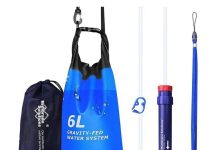For many businesses, the term RFP is a familiar one, shorthand for a critical procurement document that facilitates a wide array of services and projects. RFP stands for Request for Proposal, and it plays a pivotal role in business operations, serving as a formal invitation for suppliers to bid on a particular project or service. Understanding this process is essential for companies seeking quality work and competitive pricing. Below, we delve into the nuances of RFPs, exploring their structure, purpose, and the strategic role they play in business development.
Understanding the Definition and Purpose of an RFP

Alt text: A man using his laptop to understand what RFP means.
The RFP process underscores the criticality of clarity, competitiveness, and strategic thinking in business. By adhering to best practices, both issuers and vendors can forge mutually beneficial partnerships, enhancing service quality and value. An RFP isn’t merely a procurement tool; it’s a strategic asset capable of revolutionizing business outcomes when employed adeptly.
An RFP, or Request for Proposal, serves as a formal document issued by businesses seeking particular services or products. Its purpose is to provide a clear project scope to potential providers, facilitating a fair comparison of proposals. By inviting vendors to submit detailed proposals outlining qualifications, strategies, and pricing, companies ensure alignment with project objectives.
This structured process stimulates competition among service providers, aiming to secure the best value. RFPs are utilized to gather information and solutions from experts, serving as a bridge between business challenges and innovative responses. Understanding what does RFP mean is key to leveraging its full potential.
The Key Components of an Effective RFP
An effective Request for Proposal (RFP) comprises crucial components emphasizing clarity and detail. The introduction sets the context, providing background and outlining project objectives. The Statement of Work (SOW) delineates tasks, deliverables, scope, timeline, and evaluation criteria, fostering transparency for realistic vendor proposals.
Submission guidelines ensure consistency in proposal format and timeline, eliminating confusion. Evaluation criteria prioritize factors such as price, approach, and experience, guiding vendors towards impactful proposals.
How RFPs Work: The Process from Creation to Selection
Crafting an RFP is a meticulous endeavor, demanding meticulous attention to detail and strategic foresight. It begins with identifying an internal need that external suppliers can fulfill. The RFP must comprehensively outline technical requirements, desired outcomes, and contractual terms.
Once finalized, the RFP is disseminated to potential suppliers, either through a selective process or an open call for proposals. Vendors then submit their proposals within the specified timeframe.
A rigorous review process ensues, typically involving a committee or decision-making group. Each proposal is scrutinized against predetermined criteria, sometimes necessitating clarifications, presentations, or negotiations.
A vendor is selected based on both the proposal’s merits and the potential for a successful partnership. The chosen vendor is then awarded the contract, marking the beginning of a collaborative relationship guided by the terms established in the RFP process.
The Role of RFPs in Strategic Business Planning and Procurement

Alt text: A woman planning a team process for their business project.
Strategic business planning relies heavily on the RFP (Request for Proposal) phase for exploring new projects or procurement needs. RFPs offer a structured way to solicit solution-based approaches, potentially uncovering innovative or cost-effective solutions. They also provide valuable insights into market capabilities, guiding future strategies and spending, particularly in fast-evolving industries.
For procurement professionals, RFPs are essential for transparent, ethical sourcing practices, fostering accountability and fair procurement processes. They encourage competitive pricing and maintain high service standards among suppliers. RFPs promote internal collaboration across departments, ensuring a holistic view of the company’s needs and goals, thus supporting strategic project planning and procurement alignment.
Crafting a Winning Response to an RFP: Best Practices for Vendors
Crafting a winning RFP response hinges on grasping the client’s needs and presenting a compelling proposition. Detail is paramount, as every aspect of the RFP must be addressed thoroughly. Aligning proposals with the issuer’s objectives demonstrates understanding and strategic insight.
Customization tailored to the client’s challenges showcases attentiveness and a commitment to tailored solutions. Transparent methodology and pricing build trust while justifying value within the competitive landscape is essential. Successful vendors often propose innovative approaches, adding extra value beyond the RFP’s requirements, and showcasing expertise and commitment.
Overall, the RFP process underscores the criticality of clarity, competitiveness, and strategic thinking in business. By adhering to best practices, both issuers and vendors can forge mutually beneficial partnerships, enhancing service quality and value. An RFP isn’t merely a procurement tool; it’s a strategic asset capable of revolutionizing business outcomes when employed adeptly.






































